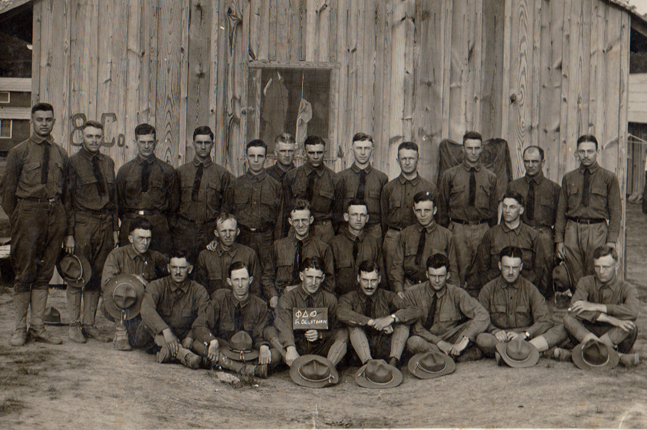
5,000+ Phis Serve in WWI
1914When hostilities broke out in Europe in 1914, the majority of North Americans had no idea the Unites States eventually would be involved in the first World War and what would become the greatest bloodbath the world had known up to that time.
European history had been punctuated by a pattern of recurring warfare that did not involve us on this side of the Atlantic.
As a whole generation of British, French, and German young men were sacrificed in the senseless struggle, fraternity life went on as usual in the USA for the first two years of combat.
But this was not the case with our two Canadian chapters at the University of Toronto (Ontario Alpha) and McGill University (Quebec Alpha). Almost 100 men had been initiated in the nine years Ontario Alpha had existed. Within months of the start of the war, twenty had volunteered and more would soon be on the way.
In the best of British Empire tradition, the educated college graduates and/or students were considered candidates for Officer Training Schools.
The summer of 1915 found many Phis in training at Niagara-on-the-Lake and a number were in the first Canadian contingent sent overseas.
Among that group was C.A.V. McCormack, Toronto ’12, who rose to the rank of major, commanding the 83rd Battalion, and Keith Munro, McGill ’10, wounded and captured by Germans at the Battle of Ypres. Dr. Alfred K. Haywood, Toronto ’08, headed a medical contingent and won the military cross for gallantry in the field. Ontario Alpha’s report to The Scroll in 1915 described the situation “… The war has been a severe blow to Canadian chapters of all fraternities … yet we feel that in taking up the sword, we are living up to The Bond in the highest interpretation of the phrase.”
The first Phi casualty reported from Ontario Alpha was Lt. Colin Simpson, killed “somewhere in France” while commanding an artillery battery.
Simpson had been a leader among Phis. “His lie adorned the chapter,” a classmate wrote. “His death leaves and ideal of splendid manhood.: Lt. Simpson was barely twenty-one.
The first Americans to go overseas were volunteers in the American Ambulance Corps. As citizens of a neutral nation, they accepted the hazards of war as non-combatants.
The first Phi on record with that group was Edward F. Sheffey II, Randolph Macon ’13, who had gone to Harvard for his MA before joining the ambulance unit. A letter from Sheffey in 1915 offers a poignant glimpse of his experience:
“Sometimes the scenes at the station are very pitiful. Think of seeing literally hundreds of men with arms and legs gone, suffering sometimes excruciating pain in the transference to the ambulance.”
The United States Army set up a training program at Plattsburg, New York, for civilians who would volunteer for military training. Those who passed the training course would be enlisted in the Army reserves. The program had great appeal to college students who could spend their summer vacations there.
Whether by accident or design, those barracks were situated just a few miles south of the Canadian border where the trainees were hearing or reading about the Canadian war effort which was all voluntary but very popular.
The participation of 1,400 Americans who took military training as volunteers at Plattsburg in the summer of 1915 must have given the military the idea to use college campuses as areas to develop preparedness in the event of future wars. Soon there were military camps operating on the same basis as Plattsburg at other sites. This was the beginning of what was to become the ROTC training for college credit.
In The Scroll, letters from American Phis about their experiences at Plattsburg and messages from Canadian Phis in the trenches began to appear side-by-side.
The Honor Roll of Phis who died in World War I, at the Fraternity’s General Headquarters, shows the 155 men from sixty-five chapters who paid the supreme sacrifice and were killed in action. More than 5,000 Phis served, more than 3,000 in France.
